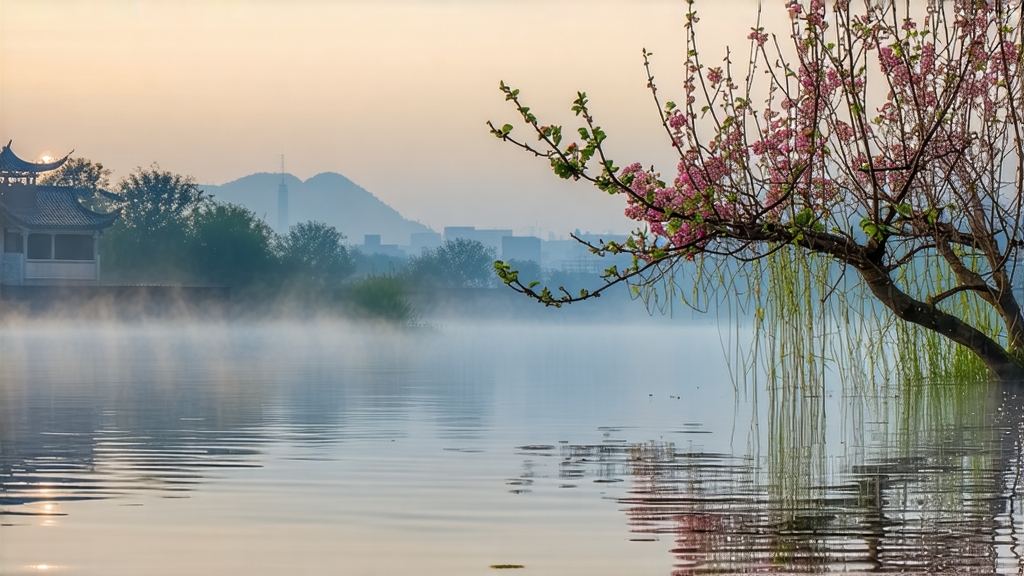
Tucked between the mist-laden hills of Dongting Mountain and the gentle ripples of Taihu Lake in Jiangsu Province, Biluochun—literally “Green Snail Spring”—has charmed Chinese tea lovers since the late Ming dynasty. Legend credits a tea picker who, running out of basket space, tucked fresh shoots inside her bodice; the warmth released an intoxicating perfume that alerted nearby monks to the leaf’s potential. Whether myth or marketing, the story captures the tea’s signature trait: an aroma so fragrant that Emperor Kangxi renamed it Biluochun in 1699, declaring its curled shape resembled a tiny jade snail and its scent rivaled spring itself.
Botanically, Biluochun belongs to the small-leaf Camellia sinensis var. sinensis. Within the narrow production zone—only the Dongting East and West mountains qualify—gardeners interplant tea bushes with fruit trees: peach, plum, apricot, loquat, and pomegranate. This companion cropping is not picturesque accident but deliberate terroir engineering. When March temperatures rise, blossoms open simultaneously with the first leaf sets, allowing petals to dust the tea with volatile esters that later survive firing. The result is a cup that tastes unmistakably of spring orchard, a quality impossible to replicate even in neighboring counties.
Plucking begins at Qingming, when each shoot consists of one barely unfurled leaf and a downy bud no longer than 2.5 cm. Experienced pickers break 60,000 such tips to yield one liang (50 g) of finished tea, explaining why top grades command prices higher than silver by weight. Leaves are rushed downhill in bamboo crates lined with fresh peach leaves to prevent compression bruising; oxidation must be kept below 3 % to preserve the jade-green color.
Withering is skipped entirely. Instead, the leaves are “kill-green” immediately in woks heated to 180 °C. A master fryer uses only his bare hands, flicking 250 g batches against the iron surface for three to four minutes in a motion called tui la (“push and pull”). The gesture both denatures enzymes and begins the spiral shaping. Temperature is then dropped to 70 °C and the real choreography begins: the fryer rolls clusters along the wok rim, pressing lightly so that leaf margins tuck inward while retaining microscopic hairs that give the dried tea its silvery sheen. After twenty minutes the curls resemble miniature snail shells, tight enough to bounce when dropped onto porcelain. Final moisture is locked at 5 % over a gentle charcoal brazier scented only by the embers of dried bamboo, adding a whisper of sweet smoke that flatters rather than masks the floral notes.
Grading follows a 1,000-year-old nomenclature still printed on tin lids: Supreme (Queshe, “Sparrow Tongue”), Special Grade (Special One to Seven), and Grade One to Three. Supreme lots contain only buds, picked within the five-day “before-rain” window; lower grades include first and second leaves, harvested until Guyu. Yet even Grade Three Biluochun out-perfumes many region’s premier teas, proof of how narrowly the aroma spectrum is defined by its birthplace.
To brew, western kettle methods often scald the leaf. Instead, emulate the local “three-stage falling stream.” Heat soft mountain water to 75 °C—just when bubbles the size of crab eyes cling to the kettle bottom. Pre-warm a 150 ml glass tulip cup, then add 3 g of tea, tilting the glass so the spirals tumble like emerald beads. Pour 30 ml of water along the inner wall, rotating to awaken the leaf; within seconds the downy hairs release a milky haze. Top up to the brim in a thin, high pour so the hydraulics coax the curls to dance mid-water, a performance known as “clouds descending.” Steep 45 seconds; the liquor should glow the color of shallow jade well water, almost transparent yet luminous. Inhale first: top notes of white peach and lilac ascend, followed by a deeper nectarine pit sweetness. Sip with teeth slightly parted so the cool air aerates the liquor across the palate; expect a snap-pea briskness that melts into marine umami, a reminder of Taihu’s freshwater proximity. Subsequent infusions—each lengthened by ten seconds—reveal layers of almond milk, rain-soaked bamboo, and a faint mineral finish reminiscent of wet slate.
Professional cuppers evaluate Bilu